DISCLAIMER: Jomo Audio provided me with the Haka in return for my honest opinion. I am not personally affiliated with the company in any way, nor do I receive any monetary rewards for a positive evaluation. The review is as follows.
Jomo Audio is a Singaporean manufacturer specialising in universal and custom IEMs. Broadcasting engineer Joseph Mou started the company in 2015, after his efforts in the DIY space rapidly found success throughout the audiophile community. Now a staple of cosmetic flair and excellent sonic performance, Jomo Audio has become one of the largest monitor brands in Asia. Today, we’ll be looking at Joseph’s single-driver unit: The Haka. Although it is the company’s entry-level piece, Haka is probably its most unique; boasting a fully-proprietary balanced-armature driver custom-voiced by Jomo Audio themselves. Truly bespoke from the inside out, the Haka is Joseph Mou’s attempt at the
less-is-morementality: Maximum yield through minimal means; a true test of technical ingenuity and relentless innovation.
Jomo Audio Haka
- Driver count: One balanced-armature driver
- Impedance: 18Ω @ 1kHz
- Sensitivity: 107dB
- Key feature(s) (if any): Fully-proprietary balanced-armature driver; 3D-printed shells (universal variant only)
- Available form factor(s): Universal and custom acrylic IEM
- Price: S$599
- Website: www.jomoaudio.com
Build and Accessories
The Haka arrives in a laser-embossed, navy blue clamshell box. Inside, you’ll find 1/4-inch and airline adapters, an owner’s card (not included in my review sample), a cleaning tool and a UE-esque, billet aluminium case with the IEMs nestled inside – all within the package’s velvet-lined cut-outs. Visually, the Haka makes a strong first impression. Accessories are modest, but the efforts that went into presentation definitely boost the unboxing experience. Despite their humble beginnings, the Jomo Audio team have effectively shed the rusticity associated with home-grown, DIY start-ups. Fully abandoning the ubiquitous Peli 1010 case as a form of
packaging placebo, this is both maturity
and attention to detail I’d love to see more of throughout 2018, lest I continue my hard case collection into the high 20s.
Contrary to companies of their relatively young age, build quality and aesthetic finesse are things the Jomo Audio team struggle to get
wrong. Defying the stereotypes that plague every Asian nation (but Japan), the born-and-raised Singaporean firm has produced some of the most stunning in-ears I have ever seen. Whether it’s multi-coloured swirls, genuinely-textured stone faceplates or full carbon-fibre shells, they can truly do it all. And, as you can see, my Haka is no exception. I gave Joseph full creative control over the monitor’s visual theme, and the blue-silver swirl he came up with
exudes reserved glamour. From the shimmer of the shells and the vortex-like faceplate design, to the gold metallic accents, my personal Haka exemplifies simplicity and detail. Additionally, the unit boasts some of the best fit and comfort I’ve ever experienced, topped of with an
outstanding lacquer coat; smooth and illustrious all throughout.
Presentation
The Jomo Audio Haka sports a well-balanced, versatile and musically-engaging signature. With its sans-crossover, single-driver configuration, Joseph aimed to achieve a forgiving yet capable signature, and he’s certainly succeeded here. Apart from moderate lifts along the sub-bass and lower-treble, the Haka maintains impressive linearity. This superb coherence – paired with the Haka’s admirable top-end extension – is responsible for the monitor’s outstandingly black background. It’s unquestionably one of the most stable foundations I’ve ever encountered within this price range, and it does wonders for the Haka’s technical performance. The in-ear gains tons of natural headroom through sheer (linear) extension alone, so instruments maintain a sense of
crackle and
pop despite the monitor’s lush and laid-back presentation. Like I mentioned previously, a slight bass bias
does exist here, but it’s tastefully done for the sake of fun.
The Haka constructs a natural, cube-like image; even in width, depth
and height. Additionally, it maintains Jomo Audio’s knack for excellent precision by using a familiar set of ingredients: Neutral notes, a stable stage and swift decay. Like the Samba and the Flamenco, the Haka exhibits an above-average sense of speed. Where it differs is in treble articulation. The Haka neither sparkles nor bites like its bigger brothers; favouring a linear treble until roll-off. As a result, its average note size
may come across as timid, but it has the advantage of sounding smoother, more forgiving and more natural than either of its siblings. Plus, the Haka’s neutral vocal placement greatly boosts depth, tip-toeing between expansion and recession with admirable success. Instrument separation is impressive, even if a small amount of texture
wassacrificed for smoothness and tone. But, at the end of the day, the Haka still manages an honourable balance between tact and musicality; compensating its lack of bite with immense speed, whilst maintaining realism throughout.
Bass
The Haka’s low-end is noticeably sub-bass-inclined. Although
mainstream pieces generally prefer a fuller bottom, the Haka has forgone this for an emphasis on control and definition. Impact is still satisfying – generally above average – but more noticeable is how tight these punches are, as well as the air that surrounds each note. As a result, the Haka’s low-end achieves great clarity and a neutral-erring tone. The mid-bass region is more relaxed by comparison, which helps maintain a clean stage. Also responsible for this is the low-end’s impressive pace. Swift transient response further boosts the monitor’s dynamic energy, and its short decay maintains a pitch-black background. Though,
bassheads may find themselves underwhelmed by the more foundational nature of the low-end, rather than pure, unbridled
slams. But, the bass’s agility and texture renders it versatile and genre-agnostic; unprecedented in the entry level.
Give-and-take aside, the Haka’s clearest achievement is extension. Jomo Audio’s proprietary driver outputs impressive amounts of sub-bass rumble, successfully establishing the in-ear’s rhythmic foundation. Again, the rise is modest and quick, so don’t expect any skull-rattling to occur. But, the Haka still displays great physicality, leading to emotionally-satisfying cadences when listening to genres like pop, EDM or metal – all without losing an ounce of finesse. Additionally, this energy contributes slightly to vocal body in place of the mid-bass and the lower-midrange. Low-end coherence and timbre are the last to benefit from this. Upright basses and kick drums consistently sound rounded and clear, due to the linearity maintained from transience to decay. Some
may notice a slight lack of bloom, but that would’ve been one compromise too many for the Haka’s balanced delivery; a work-and-play dynamic infused with skill, organicity and
fun.
Midrange
The Haka begins with a lower-midrange dip. Because of a valley spanning around 500 to 1,000Hz, the Haka delivers vocals with impressive cleanliness, clarity and precision. This endows instruments with a light, wispy and feathered quality, but they never come across anaemic or thin. Again, the Haka’s solid, energetic sub-bass injects trace amounts of body and warmth into the midrange. This attenuated region also creates an impressive amount of space around lead instruments. But, thankfully, a rise in the presence region (around 2-3kHz) prevents them from sounding diffuse or distant. The result is a seductive, alluring midrange with a mindful balance between emotional resonance and finesse. Enthusiasts with a true
love for singer-oriented tracks
may take issue with the Haka’s lack of intimacy and note size, but its current tuning benefits versatility, because of a universally-beneficial emphasis on space and speed.
The Haka’s lush-yet-roomy tuning inherently strays away from the bombastic,
big band,
wall-of-sound-esque signatures exemplified by the Lime Ears Aether or the Vision Ears VE8. But on the other hand, this contributes to its relaxing ambience; ideal for extended listening. The Haka dips once again around 4kHz, before rising in the lower-treble. These shifts make sure the monitor retains vibrancy and edge, but they’re also crucial in maximising versatility. The dip ensures the Haka is
always stridence-free, while the following rise aids contrast in articulation. In terms of timbre, the Haka remains impressively natural too. Despite a neutral mid-bass, the monitor’s linear upper-treble imbues great organicity into the midrange. Again, playing into the Haka’s buttery nature, instruments truly impress in skill
and tone. Although there’s room for improvement as far as harmonic detail and texture are concerned, the Haka’s midrange is a role model in the sub-$500 market; favouring tonal accuracy, effortless resolution, versatility and air.
Treble
As mentioned, the Haka employs a lower-treble peak to provide clarity and articulation. It resides somewhere around 6kHz, giving instruments an airy and
tizzy edge. An earlier rise would’ve given the Haka better solidity (when reproducing hi-hats, vocal vibratos, etc.), but on the other hand, poorer recordings could’ve run the risk of sounding brittle as well. Jomo Audio clearly settled on a rise with versatility in mind, continuing the Haka’s congruent theme. This feeds into the wispy, ethereal quality present in the midrange; pairing ample headroom with smooth, effortless and clear delivery. It establishes the Haka’s natural spin on transparency (not dissimilar from IEMs like the Warbler Prelude or the Empire Ears Phantom) where linearity and coherence reign supreme. Finally, a familiar element – speed – returns to aid the Haka’s sense of attack; treble notes appearing like warm feathers to the ear before vanishing without a trace.
The lower-treble is where the Haka peaks last. My church’s slow-rock rendition of
Have Yourself A Merry Little Christmas – which I recorded live, mixed and mastered – particularly lacks the high-frequency hiss present in the piano channel; indicative of a 10-12kHz dive. However, the track still maintains admirable left-right separation (especially considering the four guitars panned throughout the stage) and an impressive centre image. I imagine this is due to the single-driver’s immunity against phasing and it plays into the
solo star nature of the Haka’s vocal presentation. The calm upper-treble proves detrimental, though, in texture and
friction. In instruments like guitars and violins, the Haka ever-so-slightly smears the pluck of a string or the pull of a bow. But on the bright side, this aids organicity. The reverb-like liquidity naturalises instruments, so neither the lower-midrange dip nor the lower-treble lift come across as artificial or hollow. Plus, the former allows the Haka to retain adequate separation and stability, even with its relaxed top-end.
Select Comparisons
Warbler Audio Prelude ($1099)
The Prelude is another single-driver stunner from Turkish manufacturer, Warbler Audio. Like the Haka, the Prelude is very much a
proprietary product, except its innovations take place
around the driver; instead of within it. Although both monitors pursue wildly different ideologies – timbral accuracy for the Prelude, and versatility for the Haka – they arrive at their respective signatures with surprising similarities and
very telling deviations. In presentation, the Warbler Audio in-ear is immediately more intimate, romantic and full-sounding compared to the Haka. Their stage dimensions aren’t too far off, but the Prelude’s forwardly-placed midrange and accentuated mid-bass occupy this space to a greater degree. The Haka allows more space around its instruments, but it sounds shier and less engaging as a result. Both in-ears exhibit great speed, rendering both their stages relatively clean, stable and well-resolved.
The Prelude’s low-end is mid-bass-inclined, comprised of dense, warm and gorgeously-textured hits with excellent definition and separation. The Haka’s is less defined and more tonally neutral, but its superior speed makes way for a cleaner stage. The Prelude’s low-end is more life-like in tone
and decay, but the Haka absolutely beats it in extension; providing rumble and physicality that the Prelude simply can’t compete with. The Prelude’s bass is better heard, while the Haka’s is better felt. The midrange is probably where the two are least alike. The Haka lacks the Prelude’s forwardness, texture, power and note size, but it gives the Warbler Audio flagship a run for its money in tone and delivery. The Haka provides admirable tonal balance and constant smoothness, even if its articulation isn’t as graceful as the Prelude’s; a result of their contrasting positions at 5kHz. Though, the Haka’s decision to employ a lower-midrange dip gives it a blacker background, a more airy instrumental presentation and superior transparency.
Both monitors share a relatively linear upper-treble. The Haka’s lower-treble peak is its main source of articulation, while the Prelude’s resides in the middle-treble. As a result, the former’s interpretation of clarity is thinner and wispier, while the latter’s is thicker, meatier and more shimmer-inclined. Both emit similar amounts of energy, but they emphasise different harmonics. In cymbal crashes or open hi-hat hits, the Haka’s response is more
tss… tss… while the Prelude’s interpretation sounds closer to
tsh… tsh… Nevertheless, excellent speed on both allows either tuning to sound relatively clear (despite the relaxed upper-treble), so it’s simply a matter of preference. The Haka’s treble exhibits superior extension though – resulting in its blacker background – and the two trade blows in micro-detail retrieval and authority.
Nocturnal Audio Avalon (S$629)
Also hailing from the cityscapes of Singapore, Nocturnal Audio is another promising up-and-comer in the CIEM industry. Their Avalon is the Haka’s most direct competitor in the sub-S$1000 price range; equipped with a number of the company’s in-house tweaks. Dubbed AEX technology, the Avalon comes packed with unique cross-over networks, specially-treated sound tubes and a solid capacitor for high-pass filtering. This innovation promises a clean transition between the bass and the midrange, as well as a fun, dynamic signature.
Sonically, the Avalon employs similar – albeit significantly exaggerated – peaks and humps as the Haka, along with additional peaks along the mid-bass and upper-treble. As a result, both monitors share several spatial qualities. Instruments on both are neutrally-placed with average-sized notes, but the Avalon’s are thinner and crisper due to the upper-treble peak. This aberration also means the Avalon has the cleaner stage – with a greater contrast between notes and the background – even though headroom is similar between the two. Soundstage expansion – again – leave the two within spitting distance, but the Avalon has the edge in width, while the Haka has superior depth.
The Haka and the Avalon have similarly accentuated low-ends. But, the latter has more mid-bass energy which adds
thump-y-ness to tracks. The Haka’s is more versatile, polite and clear. Plus, its linear timbre also proves better-suited towards instrumental reproduction. The two monitors share a lower-midrange valley, but the Avalon’s is more exaggerated. As a result, instruments on the Avalon sound thinner and drier, even if they’re relatively cleaner by comparison. They then rise similarly in the presence region, but the Avalon – again – has a sharper rise at 6kHz. Vocals are – at this point –
much more articulative, but also considerably more fatiguing. The Haka’s smoother delivery is a tad less engaging; lacking a
smidgeon of texture. But, it’s
infinitely easier to listen to, especially over long periods of time.
The treble region is where the two completely diverge. While the Haka settles after its lower-treble peak with a linear – but well-extended – drop-off, the Avalon has an extra rise around 11-12 kHz. This further increases its transient response, which translates to clarity, air and articulation. This’ll make the Avalon
seem more detailed and clean. But, in actuality, both monitors retrieve similar amounts of detail and exhibit similar levels of resolution, even if the Haka is more subtle in its delivery. More crucially, this upper-treble peak significantly decreases the Avalon’s long-term comfort. Exaggerated contrast between the Avalon’s extremes allow for a fun – albeit short – listening experience, while the Haka is better geared for extended sessions; calmer and more restrained, but more rewarding in the long run.
Verdict
The Haka is Jomo Audio’s most ambitious release yet. Despite the limiting nature of single-driver in-ears, Joseph Mou – with the help of proprietary technology – has succeeded in his pursuit of ultimate coherence; delivering an immensely versatile monitor that balances fun, smoothness
and accuracy in equal measure. In many ways, the Haka is an understated product. It exhibits none of the industry’s tropes; neither a dynamic mid-bass nor a crisp, crystalline treble. And yet, achievements in linearity, speed and headroom have resulted in a sonic palate alluringly musical, immaculately smooth and
outstandingly homogenous at every turn. It’s the singular, powerful sound Joseph Mou had slaved to achieve, and it’s why the Haka is such a wonder at
any price (though, the one it
is in makes it all the more impressive). Kudos to the Jomo Audio team for their latest triumph, and I can’t wait to see what they have in store for the future.


























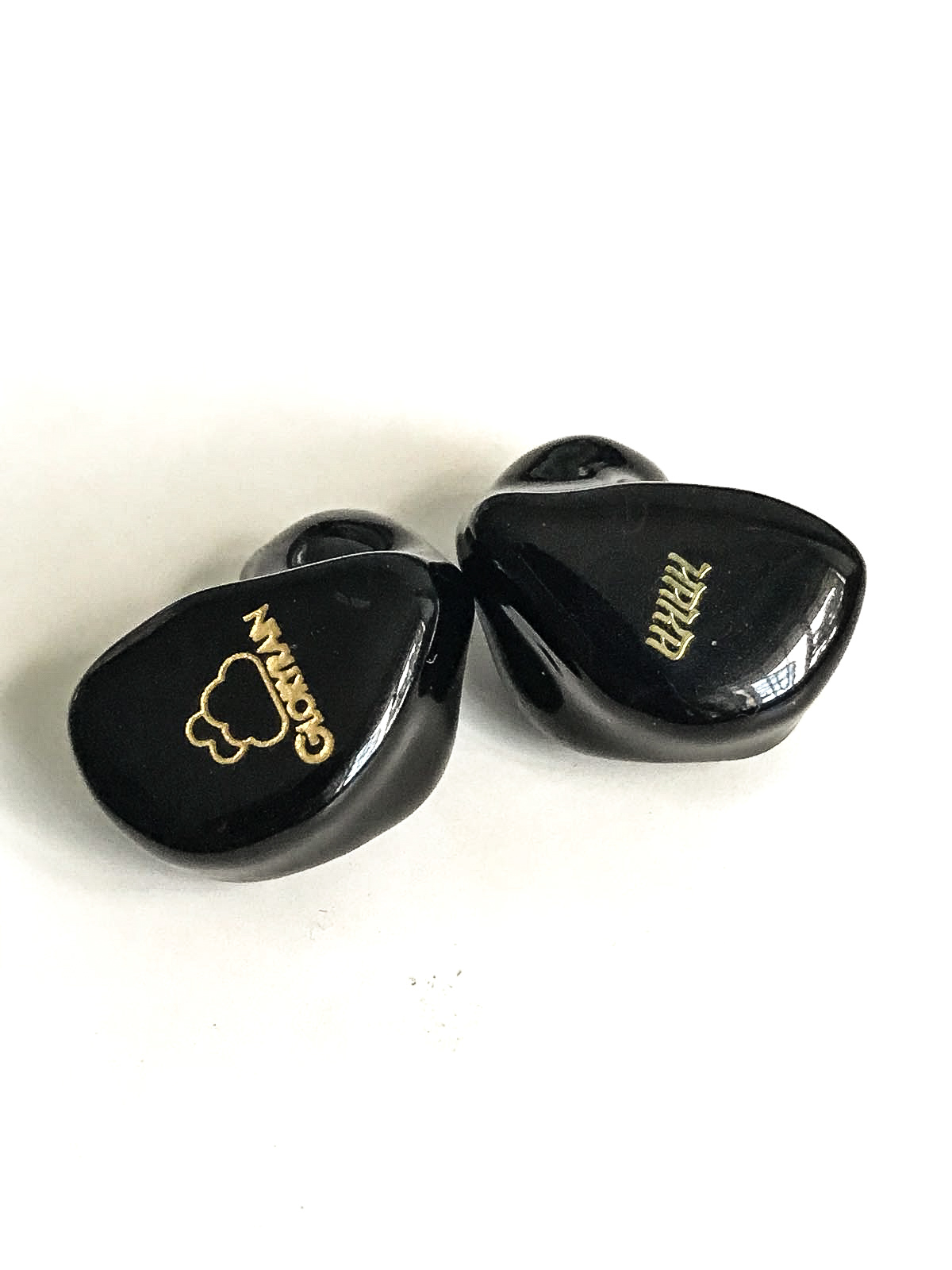
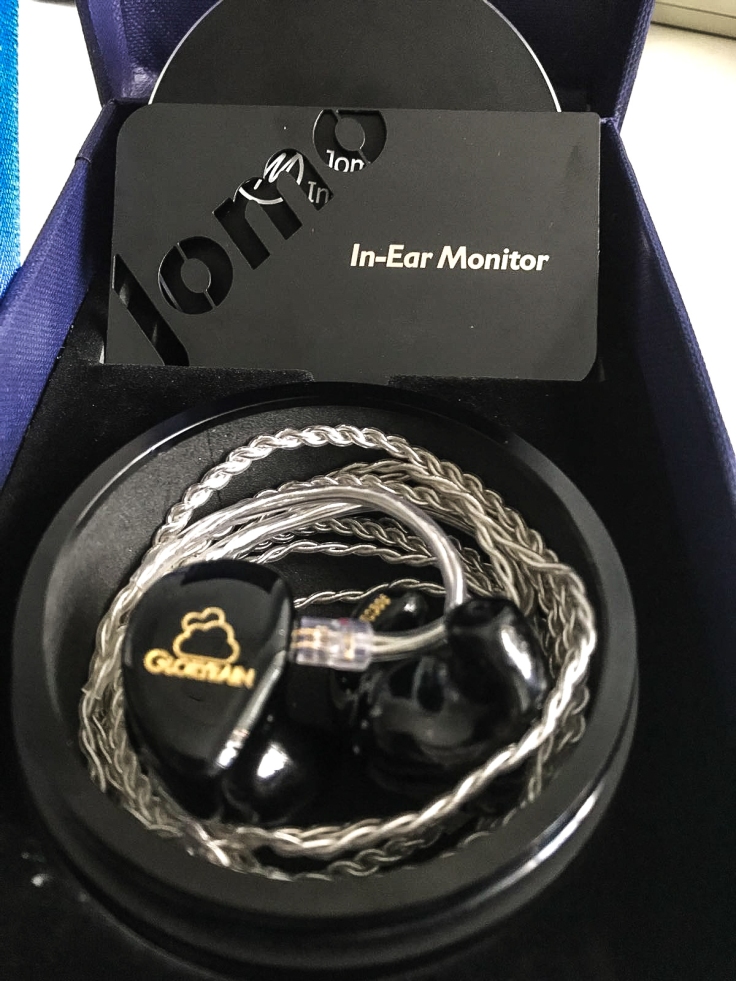
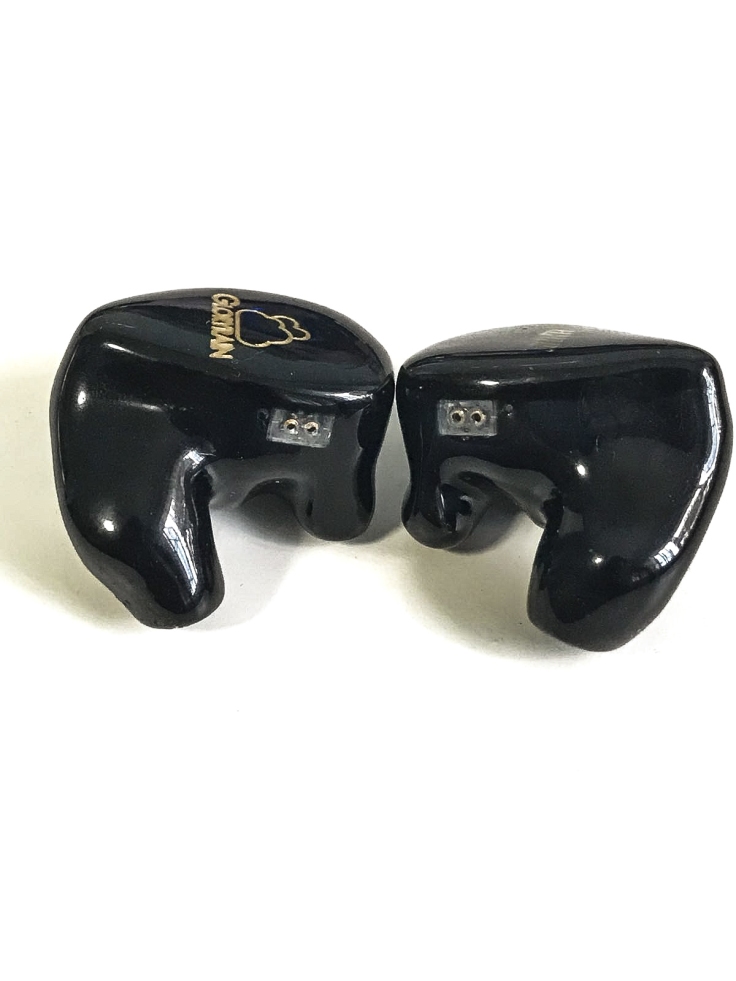
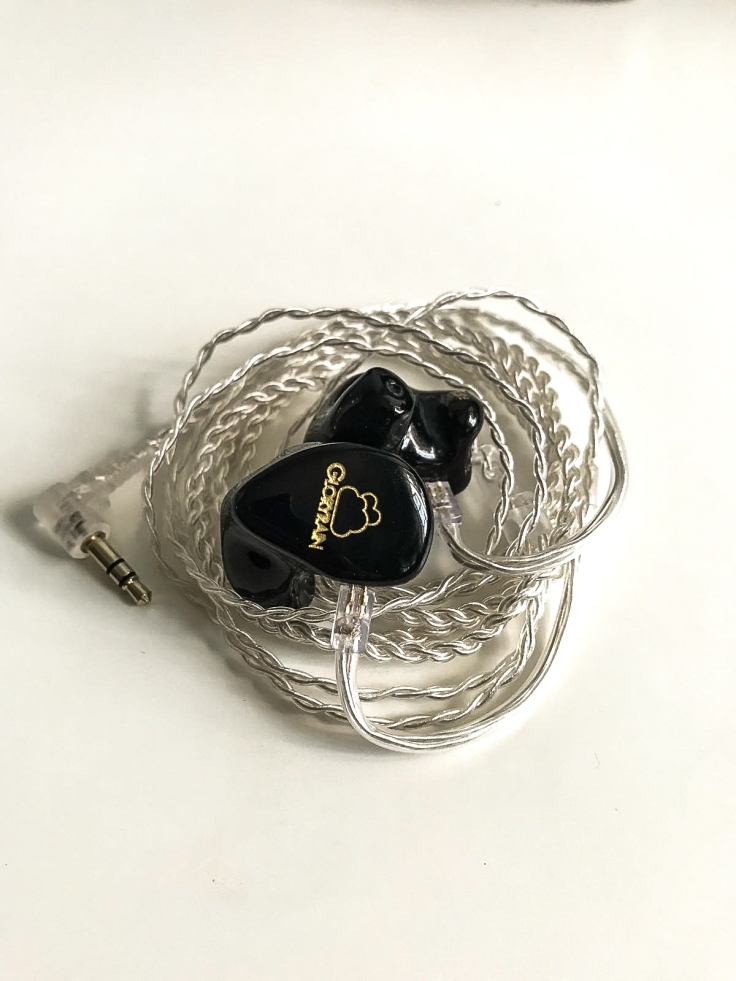
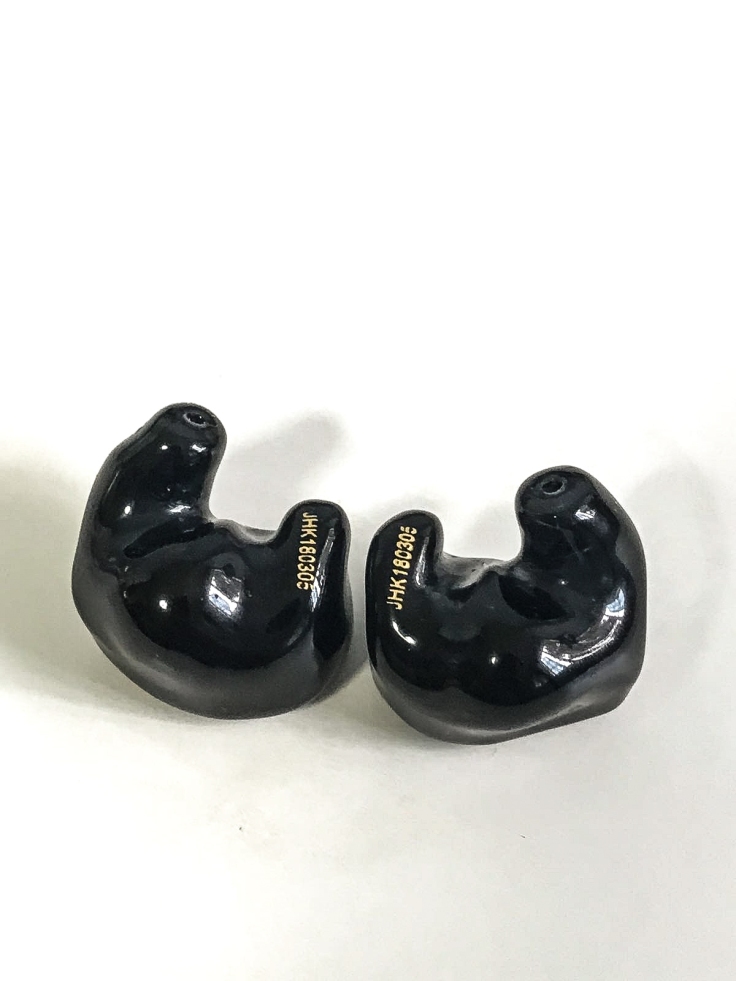
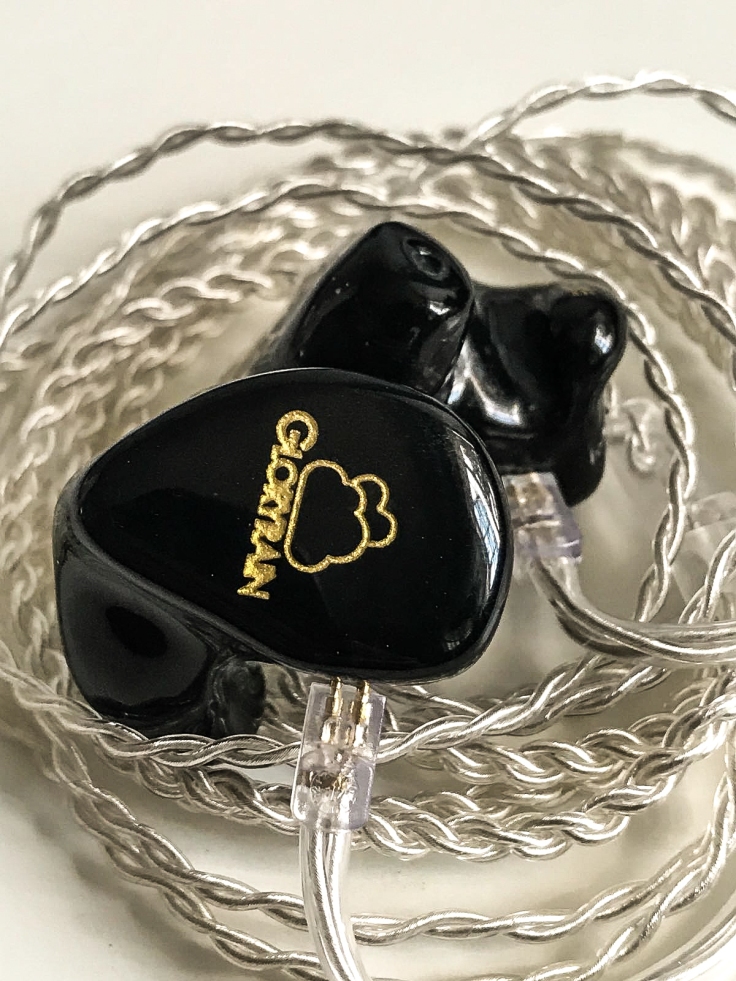




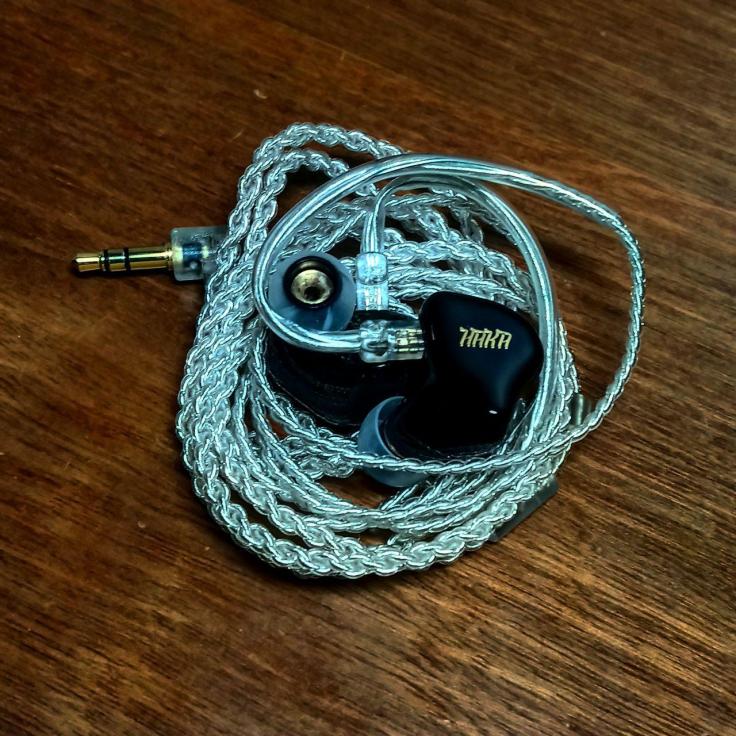
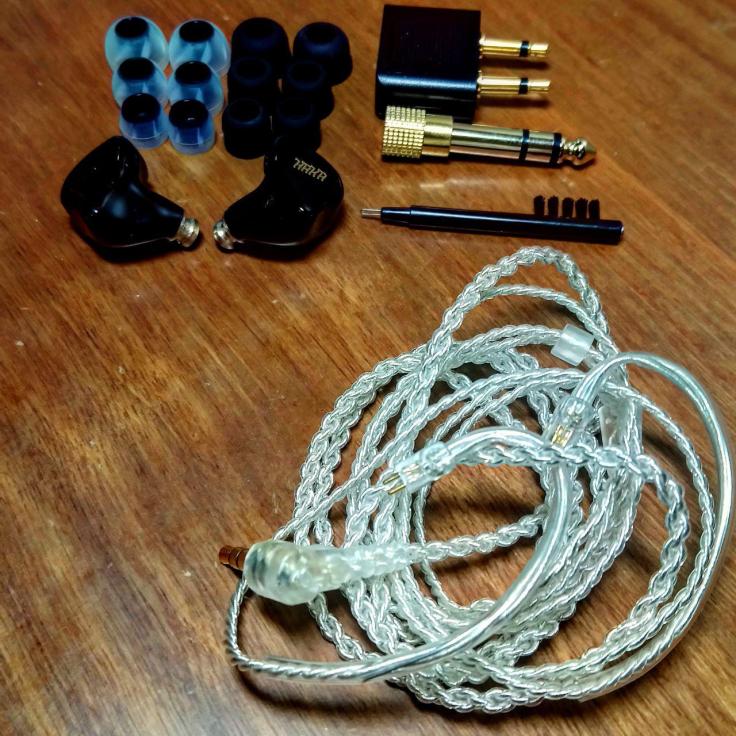
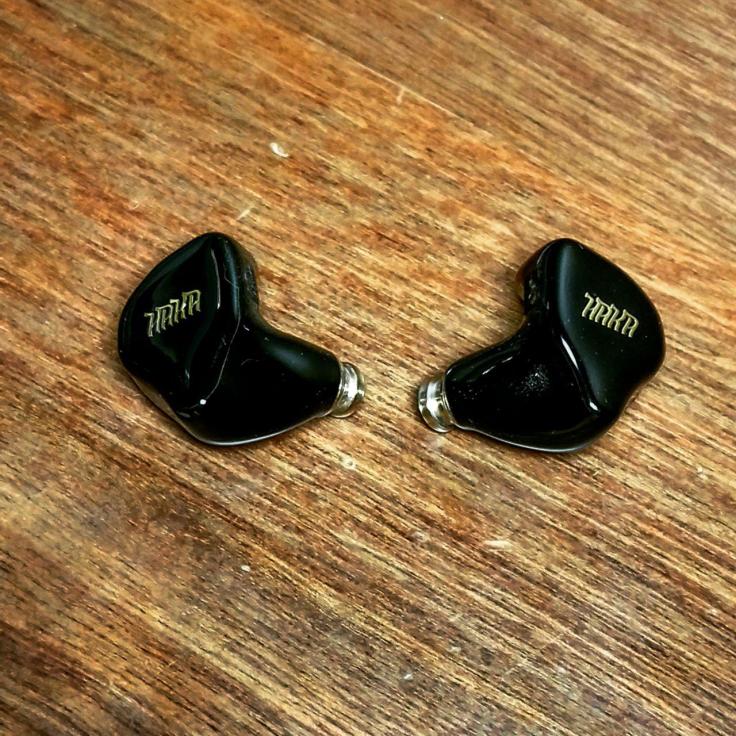

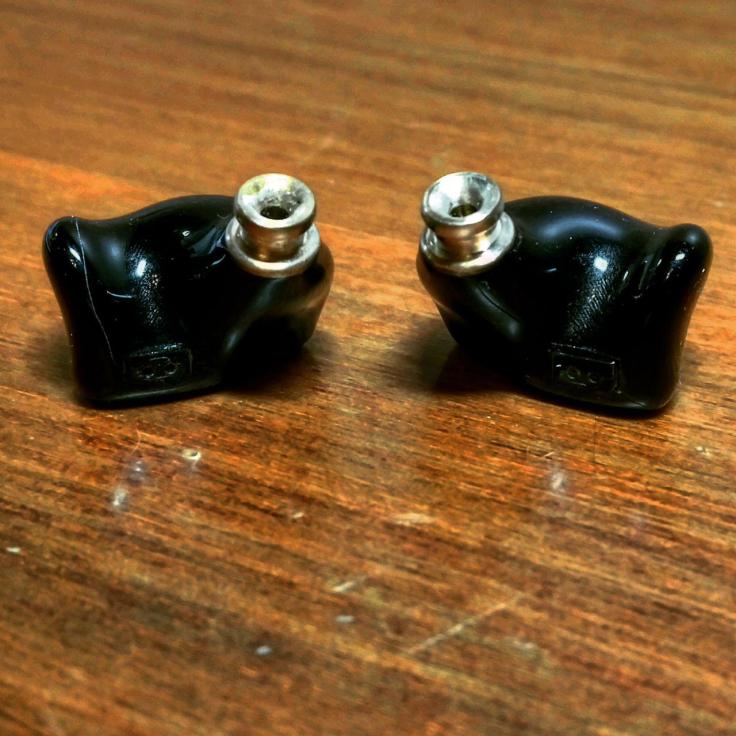
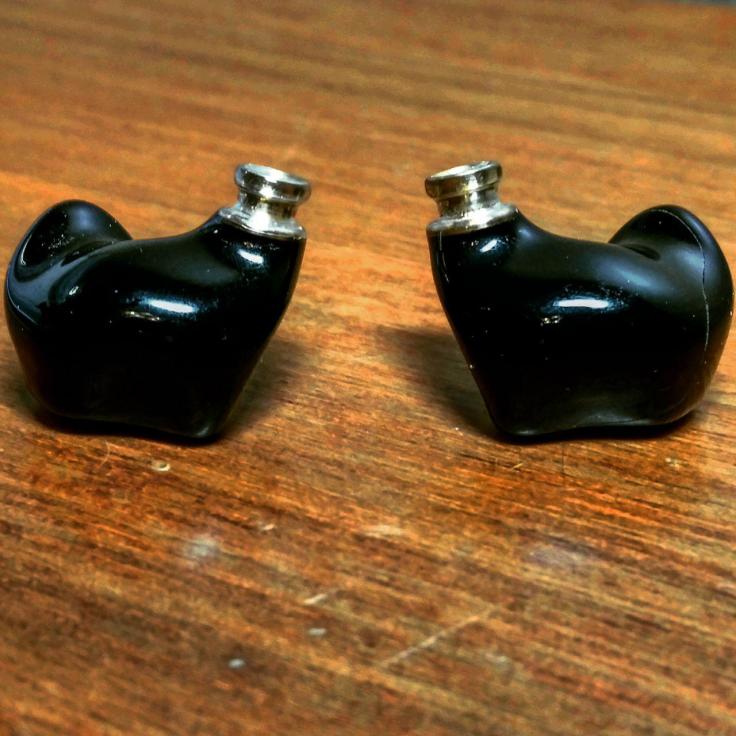

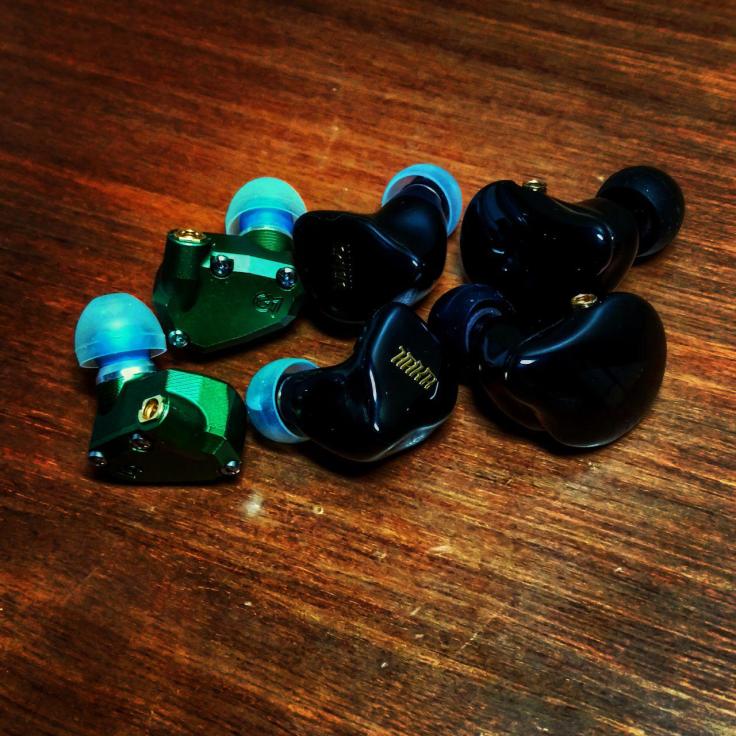
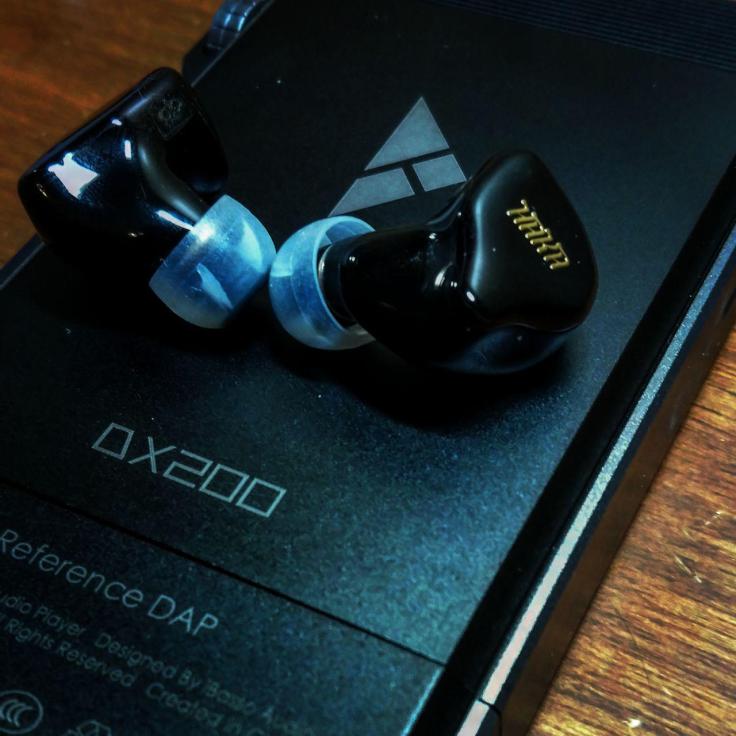

Not sure if it's because I got the version with Effect Audio's Ares II cable.
Still no foam tips though.